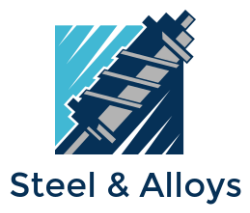SAE:8620 is a versatile and widely used steel grade known for its exceptional combination of strength, toughness, and affordability. In this comprehensive guide, we'll delve into the specifics of SAE:8620, including its origin, chemical composition, mechanical and physical properties, equivalent steel grades in various international standards, applications, heat treatment processes, available sizes, and sections.
Country, Standard, and Specification
SAE:8620 is a low-alloy steel primarily used in the United States. It is standardized by the Society of Automotive Engineers (SAE) and designated under the specification SAE J404. This steel grade may also be referred to as SAE:8620H when specifying the hardened condition.
Chemical Composition
SAE:8620's chemical composition plays a crucial role in defining its properties:
- Carbon (C): 0.18-0.23%
- Manganese (Mn): 0.70-0.90%
- Silicon (Si): 0.15-0.35%
- Nickel (Ni): 0.40-0.70%
- Chromium (Cr): 0.40-0.60%
- Molybdenum (Mo): 0.15-0.25%
This composition promotes hardenability, strength, and excellent core strength.
Mechanical & Physical Properties
SAE:8620 exhibits a range of mechanical and physical properties:
- Tensile Strength: 530-700 MPa
- Yield Strength: 385-610 MPa
- Elongation: 20-25%
- Modulus of Elasticity: 190-210 GPa
- Density: 7.85 g/cm³
These properties make it suitable for a variety of applications.
Equivalent Steel Grades
SAE:8620 can be compared to various international steel grades, making it a versatile choice:
- BS: 805M20
- AISI/SAE: 8620
- DIN: 21NiCrMo2
- Werkstoff No: 1.6523
- EN: 20NiCrMo2
- AFNOR: 20NCD2
- JIS: SNCM220
- IS: 805M20
- GOST: 20ChN2MA
These equivalents ensure compatibility with a range of global standards.
Application & Uses
SAE:8620 finds applications in various industries, including:
- Automotive: Gears, shafts, and transmission components.
- Aerospace: Landing gear components.
- Machinery: Crankshafts and hydraulic parts.
- General Engineering: Bolts, fasteners, and structural components.
Its versatility and excellent properties make it an ideal choice for parts subjected to heavy loads and wear.
Heat Treatment Process
SAE:8620 is typically supplied in the normalized or annealed condition. To achieve desired properties, it can be heat-treated by processes like carburizing, quenching, and tempering. This enhances hardness, wear resistance, and toughness. Hardening typically occurs in the range of 860-890°C (1580-1630°F), followed by tempering at lower temperatures.
Size Ranges & Sections
SAE:8620 is available in various sizes and sections, including round bars, flat bars, and sheets. Common sizes range from 6mm to 250mm in diameter. The choice of size and section depends on the specific application's requirements, and the steel is often available in both hot-rolled and cold-drawn conditions.
In summary, SAE:8620 is a versatile steel grade known for its excellent combination of properties, making it a popular choice for a wide range of applications. Whether you're in the automotive, aerospace, or general engineering industry, understanding the specifications, properties, and equivalents of SAE:8620 is essential for selecting the right material for your needs.
